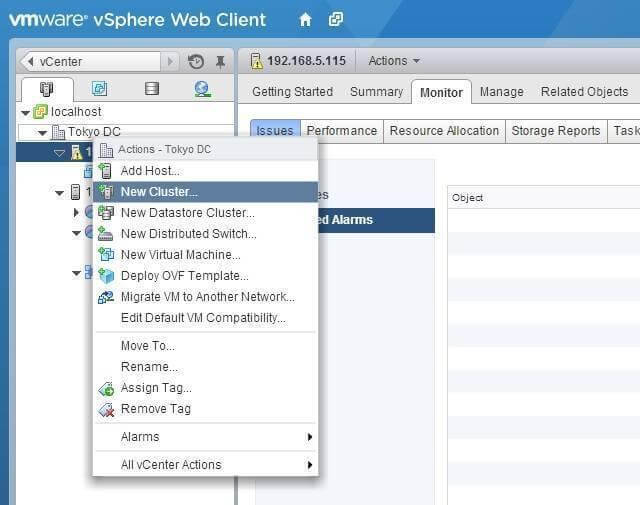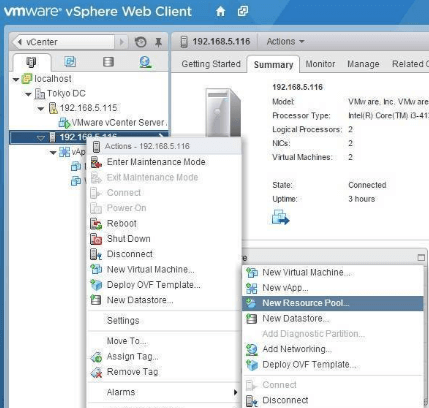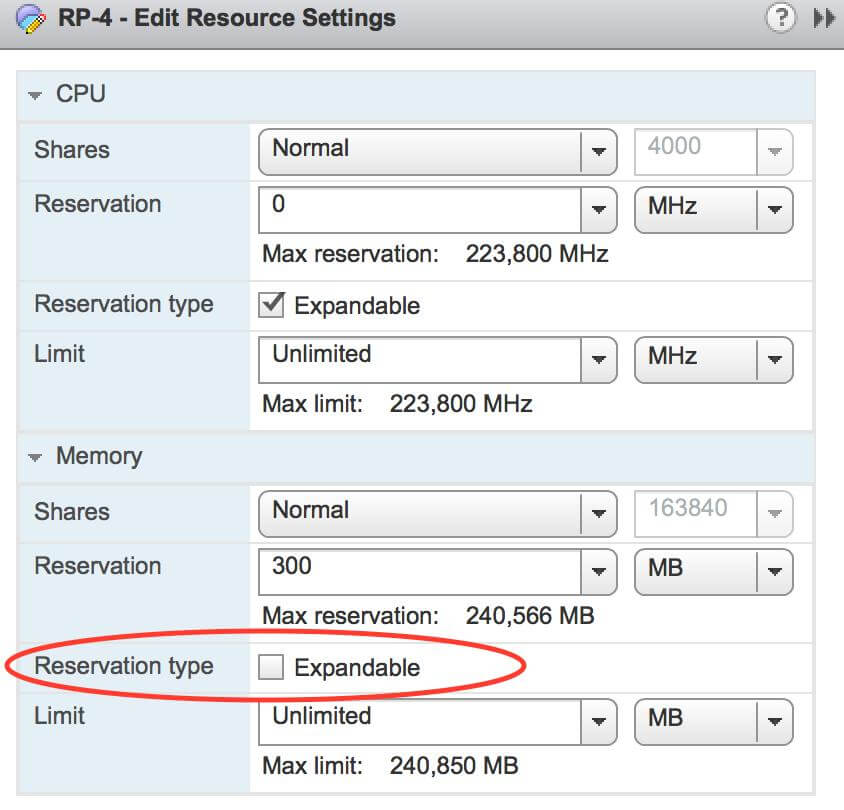There are so many amazing features of VMware vSphere suite, it is hard to nail down a single ‘best feature.’ However, there are a few contenders, and one for sure is VMware vSphere Dynamic Resource Scheduler or DRS.
As VMware virtualization took off in the latter part of the 2000s, administrators everywhere added host after host and created tons of virtual machines.
Table of Contents
- What is VMware DRS?
- How VMware DRS works?
- VMware DRS – Pre-Requisites
- Steps to Configure vSphere DRS
- Creating a Resource Pool
- Conclusion
With the release of VMware Virtual Infrastructure 3 (VI3) came the introduction of DRS (Distributed Resource Scheduler).
What is VMware DRS?
DRS is VMware’s tool for balancing compute workloads with all available resources contained in a virtual environment.
This was a groundbreaking feature release from VMware, along with VMware’s High Availability tool. These tools together have made managing a virtual workload more stable and much simpler.
How VMware DRS works?
As administrators add hosts into a DRS cluster, all of the host’s physical resources are pooled by DRS and presented to every VM across the cluster.
Administrators can then define rules (affinity or anti-affinity rules) that govern resources available to a VM on a per VM basis. DRS control can be set for fully automated all the way to fully manual.
There are many factors that help to decide the level of automated DRS actions, one being the staff’s experience or lack thereof and the amount of man-hours set aside for admin work.
In the event a VM workload exceeds its current configuration parameters, DRS will automatically redistribute the VM to another host with more resources. Conversely, if the demand on VMs decrease, DRS can power down hosts to conserve energy.
Another amazing sub-feature of DRS is the ability to create VMware Resource Pools.
A resource pool is a pool of resources from all physical hosts within a DRS cluster, to include CPU, RAM, and other resources.
In order to build a resource pool, the administrator must first configure a DRS cluster to pool all resources between the hosts. Resource pools can be built to offer different tiers of resources to VMs based on their workload requirements. VM memory overcommit will allow for VMs to go beyond their configured thresholds for memory in the event a workload spikes.
VMware DRS – Pre-Requisites
There are specific hardware/software requirements that need to be met before configuring a DRS cluster in vCenter. First of all, DRS requires a vCenter Server in order to configure and manage the feature.
Here are some other pre-requisites for DRS configuration:
- Enhanced vMotion (EVC) must be configured to allow for CPU compatibility (This is a cluster setting)
- vSphere Enterprise or Enterprise Plus License required
- VMware vCenter Server installed
- Cluster must have svMotion network configured
- Shared storage required for cluster resource and vMotion actions
Steps to Configure vSphere DRS
- Navigate to the VMware vCenter Web Client and log in with administrator credentials
- From the “Hosts and Clusters” view, expand your vCenter Server icon and right-click the ‘Datacenter’ icon and select ‘New Cluster.’
- The ‘New Cluster’ wizard will launch and prompt you to choose a name for the cluster. Name the cluster and proceed
- Next, you can expand the ‘DRS’ menu, which will present you with the configuration options for DRS. You will not be able to make any configuration changes until you check the ‘Turn ON’ box to the right of the DRS menu
- Select the ‘Automation Level’ you wish to employ in your cluster. The options are ‘Fully Automated,’ ‘Partially Automated,’ and ‘Manual.’
The automation level you choose will depend on the amount of control over the resource actions you wish to have. The majority of customers set the automation level to ‘Fully Automated’ which automatically carries out VM placement and cluster rebalancing operations
- The final configuration option is setting the ‘Migration Threshold’ by moving the slider anywhere between conservative and aggressive.
The more aggressive you set the threshold, the more DRS activity you will see in your cluster. This can at times create a strain on I/O in the cluster and slow down other operations. Set the threshold right in the middle and then adjust as needed



Post Configuration Steps
There are many post configuration steps you can take, however, it all depends on how you want the cluster configured as per your customer or organization’s needs.
One of the most common post configurations steps an administrator will do is create and manage resource pools. Here are the steps to configure a resource pool:
Creating a Resource Pool
- Navigate to your vCenter Web Client and log in with administrator credentials
- Right-click on your DRS Cluster and select ‘New Resource Pool.’ This will launch the resource pool wizard
- Name the resource pool and specify how to allocate CPU and memory resources
- Click ‘Ok.’ After the resource pool has been created, VMs may be added to it to consume its resources



From this point, you will be able to create a DRS cluster and a Resource Pool, which is a good start to managing your VMs on a consistent and healthy basis.
Conclusion
In summary, VMware’s DRS is a powerful tool for managing resource allocation in virtual environments, ensuring efficient workload balancing and resource optimization. By following the provided steps, administrators can effectively configure DRS clusters and resource pools, enhancing the management of virtual machines.
Follow our Twitter and Facebook feeds for new releases, updates, insightful posts and more.



Leave A Comment